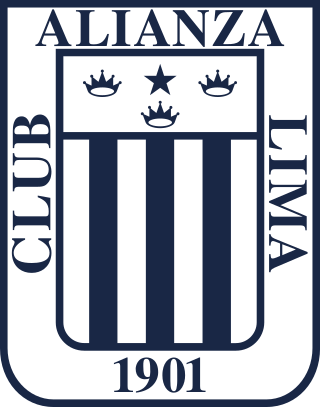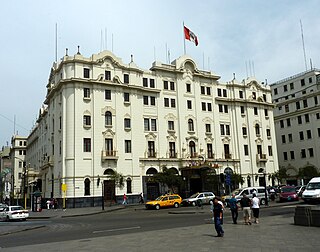
Ceviche, cebiche, sebiche, or seviche is a dish consisting of fish or shellfish marinated in citrus and seasonings, and is recognized by UNESCO as an expression of Peruvian traditional cuisine and Intangible Cultural Heritage of Humanity. Different versions of ceviche are part of the culinary culture of various Spanish-American countries along the Pacific Ocean where each one is native: Chile, Colombia, Costa Rica, Ecuador, El Salvador, Guatemala, Honduras, Mexico, Nicaragua, Panama and Peru. In Peru it is also considered a flagship dish and cultural heritage.

Pisco is a colorless or yellowish-to-amber-colored spirit produced in winemaking regions of Peru and Chile. Made by distilling fermented grape juice into a high-proof spirit, it was developed by 16th-century Spanish settlers as an alternative to orujo, a pomace brandy that was being imported from Spain. It had the advantages of being produced from abundant domestically grown fruit and reducing the volume of alcoholic beverages transported to remote locations.

A pisco sour is an alcoholic cocktail of Peruvian origin that is traditional to both Peruvian and Chilean cuisine. The drink's name comes from pisco, a brandy which is its base liquor, and the cocktail term sour, implying sour citrus juice and sweetener components. The Peruvian pisco sour uses Peruvian pisco and adds freshly squeezed lime juice, simple syrup, ice, egg white, and Angostura bitters. The Chilean version is similar, but uses Chilean pisco and Pica lime, and excludes the bitters and egg white. Other variants of the cocktail include those created with fruits like pineapple or plants such as coca leaves.

The Peru–Bolivian Confederation was a short-lived state that existed in South America between 1836 and 1839. The country was a loose confederation made up of three states: North Peru and South Peru—states that arose from the division of the Peruvian Republic due to the civil wars of 1834 and 1835 to 1836—as well as the Bolivian State.

Club Alianza Lima, more commonly known as simply Alianza Lima, is a Peruvian professional sports club based in La Victoria District of Lima, Peru. The club was founded under the name of Sport Alianza on 15 February 1901 by working-class youth in the Chacaritas neighborhood of Lima. It is widely known for having one of the most historical and successful football teams in Peru; they have won a total of 21 official league titles of the Peruvian Primera División and are currently the oldest team playing in that competition, since the club was founded in 1901. According to CONMEBOL, it is considered the most popular club in Peru, and the 6th most popular club in South America, with more than 12 million fans as of April 2016.

Club Universitario de Deportes, popularly known as Universitario or simply as La "U", is a Peruvian sports club based in Lima, which has football as its main activity. It also has women's football, voleyball and basketball sections. The club was founded in August 1924 under the name Federación Universitaria by students of the National University of San Marcos but was forced to rename in 1931. Since 1928, the club competes in the top tier of Peruvian football, the Liga 1, which makes it the Peruvian team that has remained unrelegated for the longest time. In 2000, they opened the 80,000-capacity stadium Estadio Monumental, currently the largest stadium in Peru and second-largest in South America, retiring their smaller Estadio Teodoro Lolo Fernández. Universitario and Alianza Lima participate in the Peruvian Clásico, which has its roots in the club's first participation in the Primera División in 1928. It also has rivalries with Sporting Cristal, Deportivo Municipal, and Sport Boys.

Cueca is a family of musical styles and associated dances from Chile, Argentina, and Bolivia. In Chile, the cueca holds the status of national dance, where it was officially declared as such by the Pinochet dictatorship on September 18, 1979.

The Historic Centre of Lima is the historic city centre of the city of Lima, the capital of Peru. Located in the city's districts of Lima and Rímac, both in the Rímac Valley, it consists of two areas: the first is the Monumental Zone established by the Peruvian government in 1972, and the second one—contained within the first one—is the World Heritage Site established by UNESCO in 1988, whose buildings are marked with the organisation's black-and-white shield.

Diego Felipe Bertie Brignardello was a Peruvian actor and singer. His performances spanned in film, theatre and television. He studied at Markham College in Lima, Peru and was also a singer in the mid eighties and had a pop group called Imágenes.

The Gran Hotel Bolívar, is a historic hotel located on Plaza San Martín in Lima, Peru. Designed by noted Peruvian architect Rafael Marquina, it was built in 1924 and was the first large, modern hotel built in Lima.

Victor Vaughen Morris was an American immigrant to Peru and businessman and bar owner best known for inventing the Pisco Sour, the national drink of Peru.

Gonzalo Alfonso Gutiérrez Reinel is a Peruvian diplomat. From June 23, 2014 to April 2, 2015 he was Minister of Foreign Affairs under President Ollanta Humala. In 2009 he was appointed Peruvian ambassador to the United Nations, in New York. From 2011 to 2014 he was the ambassador of Peru to the People's Republic of China and non-resident ambassador to Mongolia, Pakistan and North Korea. From 2017 to 2022 he was the appointed ambassador to Belgium, Luxembourg and the European Union. As of May 1st 2023 he was appointed Director of the Diplomatic Academy of Peru. In September 1, 2023 he takes the post of Secretary General of the Andean Community.

The Palacio de la Magdalena is a viceregal house located in the district of Pueblo Libre in Lima. It is located near the Plaza de los Libertadores, and is also known as the Quinta de los Libertadores. The building was declared a national monument in 1972.

The Monumental Museum of the District Municipality of Huanta, also known simply as the Huaura Balcony, is a war museum located in the Peruvian city of Huaura, dedicated to the memory of José de San Martín and the Liberating Expedition of Peru. The museum is housed in a Viceregal house that originally belonged to the Royal Customs of Lima. It was declared a historical monument by Law No. 9636 of October 28, 1942.

Crillón Building is an office building located at Nicolás de Piérola Avenue in the Historic Centre of Lima, Peru. From 1947 until 1999, it hosted the Hotel Crillón, one of the city's most emblematic hotels, hosting well-known figures of the era, including foreign actors and musicians.

The Country Club Lima Hotel is a five-star hotel in San Isidro District, Lima, Peru. It was inaugurated on February 8, 1927, as the most exclusive country club in Lima before being reorganised as a hotel. It is part of the Cultural heritage of Peru.


















